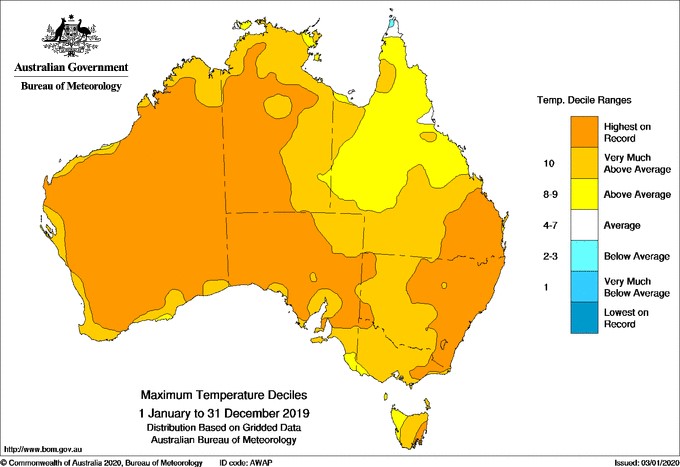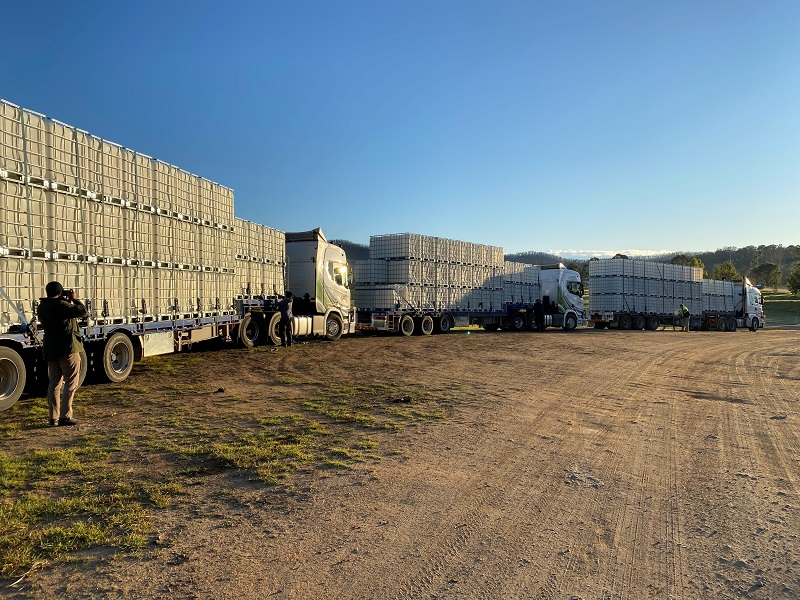FIRE IMPACTED NUMBLA VALE FARMERS RECEIVED HAY FOR LIVESTOCK
99 large bales of hay on the back of three trucks rolled into Numbla Vale NSW
Rural Aid delivered 99 large bales or 69 tonnes of hay on the back of three trailers to five drought and fire affected Numbla Vale NSW farming families, on Tuesday 19 May 2020.
The Numbla Vale hay drop, sponsored by The Church of Jesus Christ of Latter-Day Saints, will assist local farming families struggling to feed livestock.
Rural Aid CEO John Warlters said this generous donation will go a long way to help make life a little easier for many of the farmers and their families in this fire impacted area.
“Our farmers are going through challenging times,” John said. “They’ve been impacted by one of the longest droughts in recent history, followed by fires that have devasted the land, people, livestock and homes. Now they are dealing with the impact of current restrictions.
“Numbla Vale, about 55 kilometres south east of Jindabyne in the Snowy Mountains region, has a large livestock industry and there were many news reports showing the devastation that the recent fires had on the area.
“Sadly, it’s not surprising that many farmers are contacting us for assistance, however it’s the generosity of organisations like The Church of Jesus Christ of Latter-Day Saints that allows us, at Rural Aid, to continue to support our farmers and their families.
“Transport continues to be an essential service during these current restrictions. By leveraging Rural Aid’s proven delivery model to support farmers to feed their livestock and thanks to the generosity of our donors, we are able to deliver a further 11 trailers of donated hay to 25 farmers at five NSW locations, including another delivery to Numbla Vale and two to Dalgety.”
| Date | Location | Farmers | Large bales of hay |
| 22 May 2020 | Berridale | 7 | 99 |
| 28 May 2020 | Dalgety | 5 | 70 |
| 28 May 2020 | Dalgety (another delivery) | 4 | 70 |
| 29 May2020 | Old Adaminaby | 4 | 70 |
| 29 May 2020 | Numbla Vale | 5 | 70 |
Rural Aid also acknowledges and thanks the Rural Assistance Authority of NSW for their generous rebates on transport of the donated hay to farmers in the drought areas of NSW.
Impact of fire and drought in NSW
Livestock loss across NSW as a result of the fires exceeded 13,000 with over 16,000 landholders estimated to have been impacted by the fires. Southern NSW had the greatest losses with more than 12,000 head of livestock dying as a result of the fires¹. As of 28 January 2020, the fires in NSW had burnt 5.3 million hectares or 6.7% of the State².
Bureau of Meteorology
The Bureau of Meteorology noted in the Events section of its Annual Climate Statement 2019, published on 9 January 2020, that, ‘The extensive and long-lived fires appear to be the largest in scale in the modern record in New South Wales, while the total area burnt appears to be the largest in a single recorded fire season for eastern Australia’³.
- Warmest year on record for Australia – mean temperature 1.52 °C above average
- Warmest year on record for New South Wales and Western Australia
- Annual total rainfall 40% below average with much of Australia affected by drought
¹Sourced from NSW Department of Primary Industries
²Sourced from Parliament of Australia Parliamentary Library
³Sourced from Bureau of Meteorology (BOM)
About Rural Aid
Rural Aid is one of Australia’s largest rural charities. Well known for the highly successful ‘Buy a Bale’ campaign, the charity also provides financial assistance, water and counselling to farmers in times of drought, flood or fire. Other initiatives support its vision that farming and rural communities are safeguarded to ensure their sustainability both during and after these natural disasters. Visit www.ruralaid.org.au for further information on these programs and other support for our rural communities.
Visit www.ruralaid.org.au/snapshots for Rural Aid’s latest assistance statistics.
Follow Rural Aid for updates on:
- Rural Aid – FB: @ruralaidaustralia | IG: @ruralaid |IN: Rural Aid Ltd | TW: @ruralaidaust
- Buy A Bale – FB: @buyabaleofhay | IG: @buyabale | TW: @buyabale
Media Contact: Raylee Huggett – 0447 116 757 | media@admin.media.ruralaid.org.au





